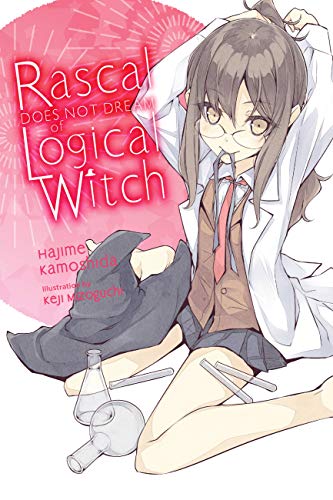By Hajime Kamoshida and Keji Mizoguchi. Released in Japan as “Seishun Buta Yarou wa Logical Witch no Yume wo Minai” by Dengeki Bunko. Released in North America by Yen On. Translated by Andrew Cunningham.
The first two books in this series were not exactly loud and obnoxious, but they were fairly action-packed and things happened in them. By contrast, the third book, focusing on Sakuta’s friend Rio, is a quiet, muted affair, which fits well with the nature of her Adolescence Syndrome. Indeed, hers is the most relatable one that we’ve seen to date, dealing with issues that would affect a number of other girls her age. It also makes a lot of sense that, despite literally being split into two, both Rios are not all that far apart – this is not an example of an evil twin here, and even the things that the non-glasses wearing Rio do are something Rio started before the split. As such, Sakuta’s role here is mostly to listen, and occasionally yell, because Rio has possibly read too much science fiction and thinks the only way that this can end is if one of her two selves dies.
There are, of course, other things going on in Sakuta’s life besides Rio’s cloning blues. Mai is back to work with a vengeance, meaning that she is not really available to date him all that much – and when the two of them are spotted, she’s reminded by her agency that the fans would go ballistic if they heard she was dating a guy, which… well, yes, is true. What’s more, the girl he fell in love with from the past is still in the present, only she’s 12, and we’re STILL not sure what’s going on there. We do find out that she has a heart condition, which I expect will be fairly important and/or tragic later on. His sister is still a shut-in and acting much younger than her age. His best friend’s girlfriend still despises him, though she also proves to be a major help here as well. And what’s this idol group that we hear about?
But yes, for the most part curing Rio merely involves being there for Rio, learning about her past as an early bloomer, and her somewhat alarming present posting salacious selfies to an Instagram-ish site. There’s a somewhat awkward explanation for this from Sakuta’s annoying reporter friend, but the cycle of elation and loathing is one that feels a bit TOO real for a series that tends to rely on supernatural phenomenon that are secretly psychological damage. And of course there’s also her crush on Yuuma, which is awkward, as I suspect nearly everyone reading this or watching the anime would rather that Yuuma be dating Rio. But… Yuuma is not in love with Rio, even though they’re best friends. We don’t hear it (i.e. Sakuta doesn’t), but it’s implied she confessed to him at the end and was rejected. And, fortunately, no Rios were killed in the making of this book. It is a nice, bittersweet and calm ending.
Well, aside from the cliffhanger, which seems to imply that a bodyswap is the next crisis we’ll face. Till then, this is one of the better written light novels I’ve seen for some time, assuming you can put up with Sakuta’s personality. Well, he is a rascal, after all.



